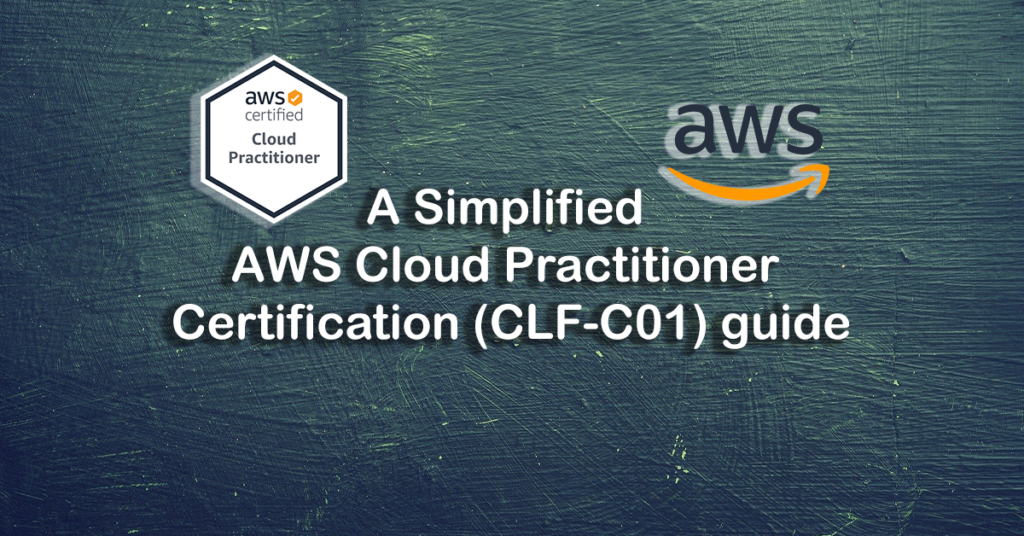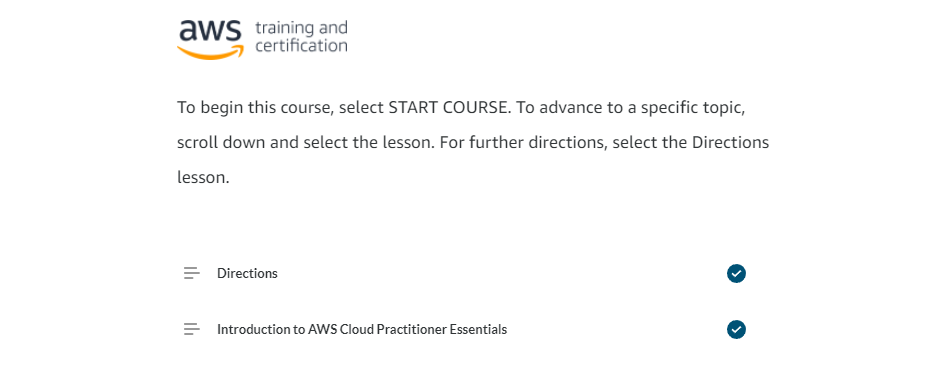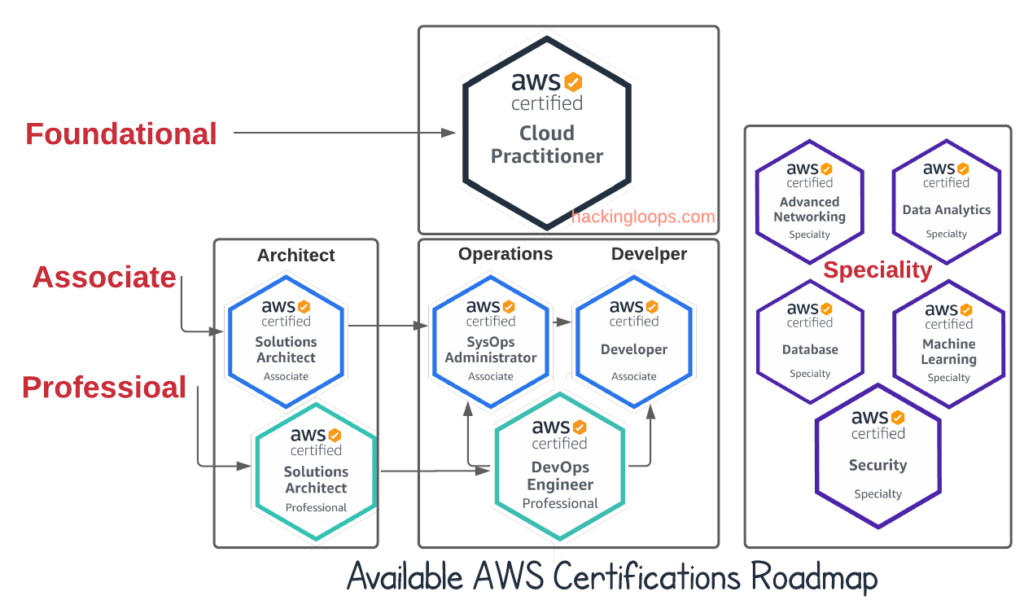What is AWS Cloud Practitioner?
Amazon Web Services (AWS) is a household name when it comes to cloud computing services. AWS directly competes with Microsoft Azure and Google Cloud Platform (GCP) as one of the leading cloud platforms in the world. The service empowers small organizations to large businesses and even government agencies with cost-effective cloud services. Both the private and public sector benefits from cloud migrations. This is where the AWS Cloud Practitioner comes in.

Though other companies offer a similar level of service for the Cloud, AWS is unmatched on all sides. Fastest, easiest, and deploying applications to the Cloud is made seamless throughout the process, making it an ideal choice for vendors who want to digitalize their services for the best.
AWS Cloud offers infrastructure as a service (IaaS), Software as a service (SaaS), and platform as a service (PaaS) for targeted organizations. As the tech world is evolving rapidly, Software and cloud infrastructure dependencies are rising too. Today, modernization lies in cloud computing, and we don’t know what the future holds.
But we all know that Amazon runs the largest eCommerce business worldwide, which was developed for their sake. Later it came out as a full-fledged service, adequate to offer other vendors a similar experience. From Amazon’s internal infrastructure, the AWS platform was born in 2006. Since then, they have been acquiring clients constantly and serving in 190 countries.
Not every company would jump to the opportunity of efficient cloud service as there is a lot to consider; it may be security, scalability or efficiency, and a lot more. AWS made easy adoption possible by pay-as-you-go tier subscription. But that’s not why you’re here, and we understand, but a little context is required for a general audience.
AWS Cloud offers computing, storage, migration, hybrid Cloud, dev tools, data management, governance, security, monitoring, analytics, Big data management, AI, ML, mobile development, message and notification, and management services under one subscription.
To handle such a massive line of products calls for a large number of specialists. It’s when an AWS Cloud Practitioner comes into play. An experienced, certified expert given green signal to help clients directly.
AWS Cloud Practitioner as a role
Becoming an AWS Cloud Practitioner opens up new doors for you to serve clients. AWS Cloud works on the EC2 model. What is the EC2 model, you may ask? If you’re handling a business that needs cloud integration, you’ll need to set up a server. Server and storage technologies aren’t cheap. Also, the fact remains that it needs to be secure. Suppose you buy equipment for your infrastructure; the efficiency model is not utilized when not in use.
During idle time, those servers just consume power, nothing else. AWS thought of that and built the infrastructure for themselves before serving customers. So, a client won’t need to waste a bunch of money on products and services they will not use. EC2 has built-in datacenters that are secured and always online, meaning it’s ready to use on-demand.
Being an AWS Cloud Practitioner puts you into the shoes of convincing the safest method to clients. In return, they’re happy to buy your service without pouring more money than required.
Even after that, a client may assume that if they have an infrastructure of their own, they will not have to pay for the service in the long run. While it is true, being in a rapidly changing technological era, you’ll never know when a new system arrives, and yours will become obsolete. Clients are paying for it beforehand; it already dented their balance sheet; optimizing for the modern feature will become a luxury, and we don’t want that.
How to become AWS Certified Cloud Practitioner?
Before jumping into the AWS Cloud Practitioner exam, we assume the individual/ you already have some experience on the matter. Working with Amazon Cloud and web services makes the fluidity and adaptation process much more manageable. Though the certification is not enough to become a developer or engineer, it will still get you shortlisted for interviews. Even for DevOps, a different certificate is required. In the AWS certification roadmap, the AWS Cloud Practitioner is the first step towards better achievements.
According to Amazon Cloud, to partake in the exam, the individual must undergo at least six months of exposure to the AWS Cloud platform and a basic understanding of IT services. Also, AWS services such as billings, pricing models, and security concepts. Start getting yourself familiarizing with the certification by visiting this link.

The AWS Cloud Practitioner Certification (CLF-C01) requires a shared responsibility model, best practices, standard cases, etc. Here are the official resources:
- Training and certification guide for AWS Certified Cloud Practitioner.
- Here you can find sample exam questions.
- AWS Cloud Practitioner Essentials to learn the fundamentals.
- Know about the certification event.
- AWS Power Hour: Cloud Practitioner with official resources.
- Pricing materials.
- Comparing AWS support plans.
These are some of the valuable resources to have a rough idea before sitting for the exam. A student should understand that AWS Cloud services are served in the pay-as-you-go pricing model. With AWS Cloud, clients can have as many benefits as they want and whenever they want. So, paying upfront becomes unnecessary in this model, along with capacity constraints.
Course Objectives
The AWS Cloud Practitioner includes four primary domains: Cloud concepts, technology, security and compliance, billing, and pricing. Cloud concepts or Domain 1 covers 26% of the exam, security and compliance covers 25% of the exam ad Domain 2, technology covers 33% as Domain 3, and billing and pricing (Domain 4) cover 16%, totaling 100%.
Within 90 minutes, you’ll need to answer 65 questions. To pass the exam minimum 70% score is required. Questions include multiple-choice and multiple-response. Multiple-choice has four answers, among which one is correct. In multiple-response questions, you can choose two or more correct answers from five or more options.
Here are some additional resources: Overview of AWS, working model of AWS pricing, and comparing support plans.
Value of AWS Cloud Practitioner
An AWS Certified Cloud Practitioner has exposure to AWS projects for an extended period and later passed the AWS certification process to get the AWS Cloud Practitioner title. The individual holding the certification is thought of having a birds-eye view or 50,000-foot view on the overall topic. Of course, a certificate is given, a bonus on top of the experience you gather.

Being a certification holder lets the clients know you’re capable of handling:
- Amazon S3 (simple storage service).
- Amazon EFS (elastic file system).
- Amazon EBS (instance stores and amazon elastic block stores).
- Amazon RDS (relational database services).
- DynamoDB.
- Redshift.
- CloudWatch.
- CloudTrail.
- Trusted Advisory.
- Edge and global locations.
- EC2 and similar services.
What’s ahead?
Once the goal of becoming an AWS Certified Cloud Practitioner is achieved, the individual can target towards SysOps Administrator, Solutions Architect, Cloud Engineer or Security Engineer. Of course, further certifications are needed, like the DevOps Engineer and AWS Solutions Architect.

The Amazon Web Services infrastructure has grown tenfold over the years, and it’s still expanding rapidly. Experienced personnel can learn AWS security, networking, database management, data analysis, and machine learning (ML). As the world revolves around data, becoming a data scientist can be an ideal choice, along with migration/ hybrid engineering. Each of these sections we mentioned requires lots of experience to qualify.
Good to know!
AWS Cloud services or your role as a certified practitioner competes against a big name in the field such as Microsoft Azure or Google Cloud Platform (GCP), but a clear conscience is needed. GCP allows customizing CPU selection and how much RAM can be allocated for computing instances. We don’t have that option with AWS Cloud, and it’s something to remember. Though AWS EC2 offers efficient components and constantly improving, it may become challenging to convince the client.
Our point is, AWS Certified Cloud Practitioner should know the system’s weakness and what competitor is offering, and how it directly impacts the business integration. That’s what differentiates a good practitioner from the very best.
Endnote
Cloud is not the future; Cloud is now. Being an AWS Cloud Practitioner will open up more job opportunities and widen income potential. Though AWS offers a wide array of certifications, the AWS Cloud Practitioner remains one of the crucial ones as it’s something you need to become by choice; the rest follows as interest and learning curiosity grows.

Leave a Reply